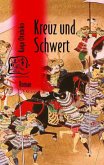In 1941, the lives of the prosperous, thriving expatriate community on Luzon in the Philippines were plunged into chaos after the Japanese attack on Pearl Harbor and their subsequent entry into the war. After the failure of General MacArthur's army and air force to defend the island, the British and American civilians in Manila, over five thousand men women and children, were incarcerated, their property seized. Life within the Santo Tomas internment camp was a nightmare of disease, deprivation and torture. The appointment of a particularly sadistic army officer, Colonel Hayashi as Commandant in August, 1944, heralded the darkest days for the internees. As a result of Hayashi's regime, the mortality rate among the prisoners soared. Their ordeal continued until MacArthur's soldiers liberated the internees in 1945. But, perhaps more important than any physical harm suffered within Santo Tomas, was the mental and spiritual damage such incarceration had on the victims. As with Manila itself, the end of the Japanese occupation did not immediately signal the end of the suffering. In the shadow of a city reduced to rubble, the former internees would have to rebuild their lives.
Bitte wählen Sie Ihr Anliegen aus.
Rechnungen
Retourenschein anfordern
Bestellstatus
Storno








